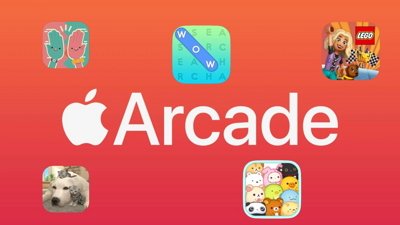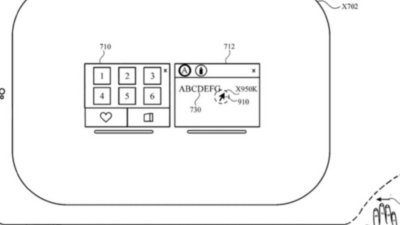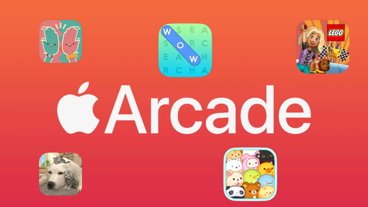Imagination's job postings include an OpenCL Compiler Senior Design Engineer, OpenCL Driver Design Engineer, and OpenCL Compiler Design Engineer. Each requests experience with "embedded real-time operating systems" as well as kernel and assembly language development skills, and indicate a focus on "software for current and next generation graphics hardware."
PowerVR and OpenCL
Imagination is the developer behind PowerVR mobile graphics and video processor cores, which are broadly used in millions of mobile phones and other devices from media players to TV set top boxes to car navigation systems. PowerVR graphics cores are also installed in everything from Apple's iPhone and iPod touch to Nokia's N95 and Internet Tablets, as well as other higher-end mobile phones from makers such as Motorola, Sony Ericsson, and Palm.
There are some mobile devices that don't use PowerVR cores; Sony uses a proprietary graphics processor in its PlayStation Portable (although the upcoming PSP2 is rumored to use a PowerVR design), while both the Nintendo DS and the Microsoft Zune lack a GPU core, simply relying on software graphics running on their main ARM CPU. Dedicated PowerVR cores built into an ARM or Intel Atom SoC or "System on a Chip" will not only provide improved graphics power for gaming, but also enable support for higher quality video acceleration.
Additionally, while PowerVR cores include support for Microsoft's proprietary DirectX graphics APIs, nearly all mobile devices have now standardized around OpenGL. Apple's strength in the iPod segment and its strong start with the iPhone are both helping build critical mass around OpenGL in the mobile development space. That will also lend support to the related OpenCL API as a general purpose computing environment on mobile devices, a potential that has until now largely remained only a matter of speculation.
OpenCL poised to go mobile
Imagination's interest in hiring OpenCL developers means the GPGPU (General-Purpose computation on GPUs) technology is already immediately relevant to mobile developers, as the company's PowerVR GPUs are currently used only in mobile devices, and the job postings make it clear that the OpenCL positions are related to embedded, mobile graphics. While the company has expressed interest in entering the laptop PC market, it faces foreboding, entrenched competition from GPU giants NVIDA and AMD's ATI.
NVIDIA and AMD have already jumped on the OpenCL bandwagon to support the open new API in conventional desktop PC GPGPU computing, but Imagination's active interest in hiring OpenCL engineers means that the GPGPU technology has a broader application range than many industry observers have suspected. The potential for OpenCL's parallel computing in mobile devices includes greater power efficiency and improvements in raw computing power across multiple cores rather than a reliance on a primary, hotter running, higher speed CPU.
Apple and Imagination
Apple recently stepped up to buy 8 million shares of the graphics technology company, and was revealed in an accompanying press release to be a licensee of Imagination's technology. That news was first revealed by AppleInsider as all but official months ago.
While Apple's relationship with Imagination was long shrouded in secrecy, the Mac maker had publicly revealed its plans to design custom chips for its iPod and iPhone lines via its acquisition of PA Semi, a fabless processor design firm. Imagination's PowerVR cores are the industry standard for mobile graphics, so there's no real surprise that Apple would license the technology for use in its upcoming SoC designs.
However, Imagination's push to hire OpenCL developers indicates something new: rather than simply adding standard graphics cores to standard ARM CPUs to create conventional SoC devices like those already used across the board in today's mobile phones, Apple clearly intends to rapidly accelerate the processing capabilities of its upcoming mobile devices using the same GPGPU parallel processing technology that it will bring to conventional desktop and laptop computers with Snow Leopard.
OpenCL's strategic wins for Apple
While Apple presented OpenCL to the Khronos Group to maintain as an open, royalty free industry standard, the company will continue to enjoy a first mover advantage in implementing OpenCL within Snow Leopard next year, as well as a lead in OpenCL mobile hardware as it begins production of its custom designed SoCs with new and perhaps multiple PowerVR graphics and video processing cores.
Apple's mobile OS used on the iPod touch and iPhone is also based directly upon its desktop Mac OS X kernel, operating system, and development environment, an advantage in software portability that is not similarly shared by its competitors, including Microsoft's Windows Vista and Windows Mobile, or by Nokia's Symbian, Nokia OS, and Linux products. Google's new Android mobile OS similarly shares less in common with desktop Linux platforms.
Additionally, OpenCL's similarities to the OpenGL APIs will help entrench both open standards in mobile development before Microsoft's DirectX has a chance to monopolize the market. That in turn will create a mobile bulwark which will likely help marginalize the dominance of DirectX in the broader computing landscape, just as the iPod pulled the wind from the sails of Microsoft's Windows Media DRM strategy. In the game console market, DirectX on the Xbox 360 faces Nintendo and Sony, both in the OpenGL camp. Mobile gaming is entirely based on OpenGL. On the PC desktop, the proprietary DirectX hegemony is facing erosion from increasing interest in cross platform support for Linux and Mac OS X, which can only be delivered via OpenGL.
By promoting OpenCL as an interoperable, open industry standard, Apple will level the playing field in the graphics arena, flattening Microsoft's monopoly position so that innovative companies can both contribute towards the state of the art and score touchdowns when they introduce superior products.
 Prince McLean
Prince McLean
-m.jpg)






 Malcolm Owen
Malcolm Owen
 Amber Neely
Amber Neely
 Andrew Orr
Andrew Orr
 Wesley Hilliard
Wesley Hilliard
 William Gallagher
William Gallagher


 Sponsored Content
Sponsored Content








72 Comments
Hopefully, soon for this:
Next Apple moves will be Books and Games…
http://spidouz.wordpress.com/2008/09...ooks-and-games
With full Mac OS X 10.5.6 inside. Firewire 800 and Ethernet ports. VGA video-out.
AMAZING!
The "facts" in your article about OpenGL are wong. What your are writing is maybe true in theory but thats just all.
Take a look at the official Subset. If you want modern features you have to take the Extensions from Nvidia or ATI.
Windows-OpenGL != Linux-OpenGL != Mac-OpenGL. And Nvidia-OpenGL != AMD-OpenGL
e.g. NVIDIA Hardware und OpenGL problems
http://www.opengl.org/discussion_boa...614#Post246614
http://www.opengl.org/discussion_boa...267#Post246267
http://www.opengl.org/discussion_boa...075#Post245075
http://www.opengl.org/discussion_boa...629#Post242629
http://www.opengl.org/discussion_boa...472#Post241472
http://www.opengl.org/discussion_boa...209#Post246209
OpenGL3 is a joke. Big promisses but nearly "nothing" happened. At the end also Carmack (one of the big supporters) was pissed about OpenGL3. DirectX is much better for the programmer. The PS3 is able to use PSGL. PSGL is a specified Version from OpenGL ES. But PSGL is just an option for the ps3. There are also so much extensions, that where remains nearly nothing from "to be independent from the hardware". No one who understand something from coding on the ps3 will use PSGL.
The Nintendo Wii is using a Custom API. Some of the Concepts of OpenGL are simliar.
Hopefully, soon for this:
Next Apple moves will be Books and Games…
http://spidouz.wordpress.com/2008/09...ooks-and-games
With full Mac OS X 10.5.6 inside. Firewire 800 and Ethernet ports. VGA video-out.
AMAZING!
VGA? Apple hasn't supported VGA in years and is set to move all their Macs from DVI to Mini DisplayPort at Macworld.Anyway, this article was very informative. Can't imagine just how awesome Apple's next generation iPhone/iPod touch platform will be.
I'm glad to see Imagination getting right to work on leveraging OpenCL.
Sure OpenGL 3.0 might not be all that people expected but the wait for OpenGL 3.1 hopefully
isn't that long and that's the first release that breaks some backwards compatibility and moves forward.
In the meantime OpenGL ES 2.0 along with faster processing and OpenCL should have a nice impact on the next iPhone update.
In fact if they begin to use a Snow Leopard based core I think you'll finally see the arrival of background processing. My guess is Apple forbids it today because background processes would slow the phone down.
Grand Central was designed precisely to manage these taskes and a low level while OpenCL manages your data (CPU, GPU) at a high level. The next iPhone would do well to support both technologies to enable more functionality.
... Can't imagine just how awesome Apple's next generation iPhone/iPod touch platform will be.
I think Apple is thinking beyond iPhones and iPods with this move.
Apple will be basing their future "tablets" and "netbooks" on this same architecture.
Apple wants notebook class performance in a "netbook" or "tablet" form factor.
Something the competition will not be able to deliver because they must make compromises...Apple will not.